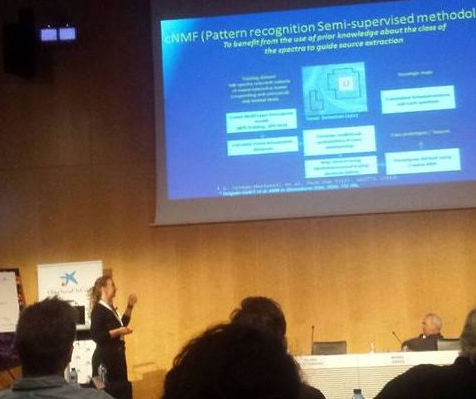
Last November took place in CosmoCaixa, Barcelona, the B-Debate Days Imaging for Life. Molecules from Diagnostics and Therapy.
The event, organized by B·Debate (an initiative of Biocat and “la Caixa” Foundation), IBB and LJS, was focussed on Biomolecular Imaging, with emphasis on molecular, cellular, tissular and small animal research, as well as biomedical applications, including noninvasive diagnostics, image guided surgery, multimodal imaging and theranostics.
Scientists of NANBIOIS Unit 20 and 25 were invited to participate as guest lecturers:
-Simó Schwartz, Scientific Director of Unit 20: New bioluminescent models to target cancer stem cells with nanomedicine.
-Ana Paula Candiota, Scientific Coordinator of Unit 25: Unravelling therapy response in preclinical glioblastoma using MRSI-based molecular imaging and source analysis.
As Professor Candiota explained “Characterization of Glioblastoma (GB) response to treatment is a key factor for improving patient survival and prognosis. Magnetic Resonance Imaging and Spectroscopic Imaging (MRI/MRSI) provide morphologic and metabolic profiles of GB but usually fail to produce unequivocal surrogate biomarkers of response. Ideally, we would like to provide clinicians with early therapy response follow-up and an improved time frame for changing or adapting therapy schemes”. Her talk focussed in the capability of advanced pattern recognition techniques, such as semi-supervised signal source extraction, to produce nosological images with robust recognition of response to temozolomide (TMZ) in preclinical GB (GL261 tumour-bearing in immunocompetent C57BL/6 mice) through the information contained in MRSI grids. These techniques have a clear translational potential and could improve future patient management and care. The acquisition of mice MRSI data used for pattern recognition strategies development and evaluation was performed in the Biospec 7T scanner from U25.








